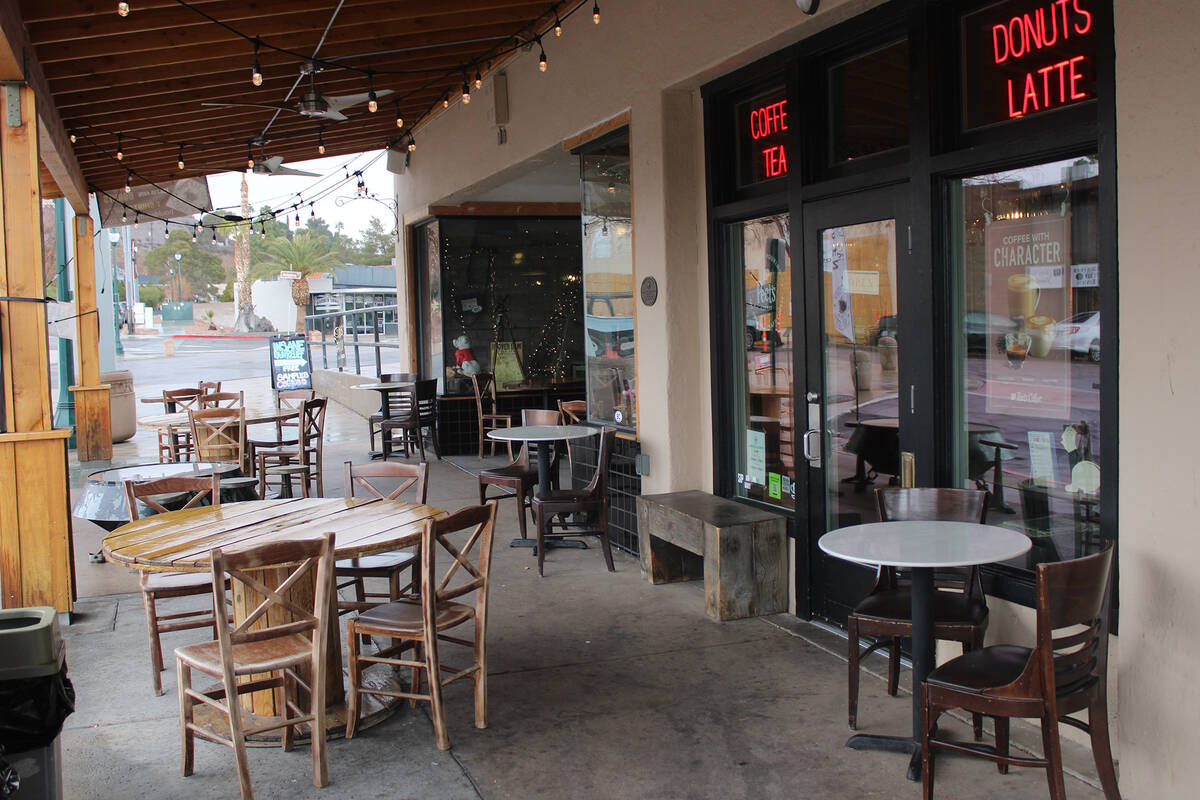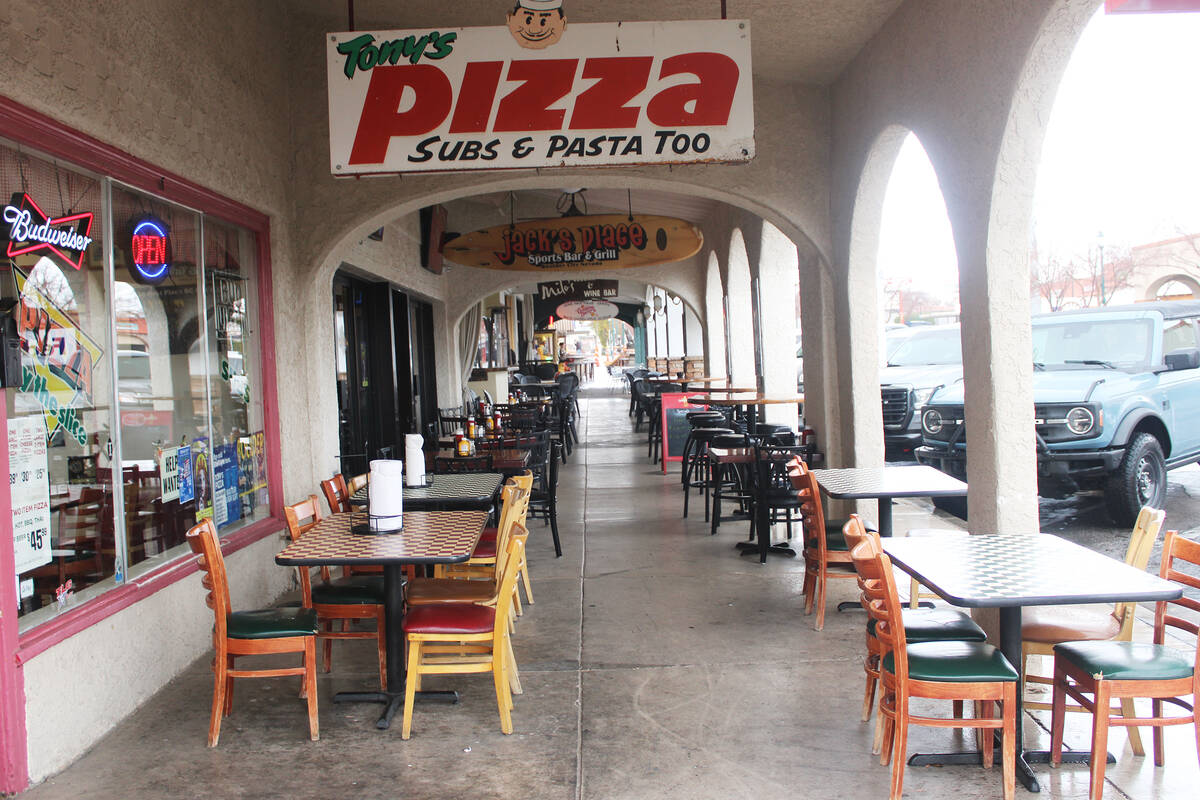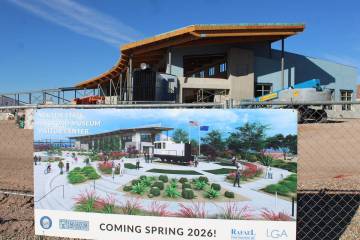The lowdown on dining tables on city sidewalks
Spring and summer (OK, part of summer) in Boulder City can present the perfect environment for an al fresco meal.
And, indeed, there are a ton of tables outside of local restaurants. But with the exception of those which have a large outdoor space that is purpose-built for outdoor food and beverage consumption, those table are actually on the sidewalks, aka a public right of way.
So how did the tables get there and what are the rules?
To start, as easy as it is to point to the pandemic as the reason for things like this, it goes back much further. To 2007, to be precise.
Per Boulder City Director of Public Works Jamie Curreri, by 2007 enough businesses were placing tables and merchandise displays on sidewalks that it became “an ongoing issue” for city staff and the City Council.
“City staff was tasked with the responsibility of researching similar issues, requirements, and ordinances from throughout Clark County,” he said in an email. “After careful consideration of the issues and challenges, as well as the potential benefits to the community, staff came to a consensus on appropriate restrictions and requirements for the use of these facilities. Several drafts of the proposed ordinance were presented to multiple business owners’ forums for collaboration and after addressing concerns from these forums, the finalized ordinance was agreed to.”
The resulting ordinance was introduced, voted on and adopted in November of 2007 and went into effect Dec. 19 of that year. In Boulder City Code, it’s known as Title 19, Chapter 15, “Encroachments.”
That ordinance defined the parameters for allowable encroachment by businesses on city property and set up some ground rules. The idea was to allow for some encroachment without blocking safe passage for sidewalk travelers, which includes accessibility to comply with the Americans with Disabilities Act.
In order to have tables on the sidewalk, businesses go through a process with the Public Works department. A design or layout has to be submitted for review and approval and there is a small one-time fee associated with the application. The city fee is $59.43. The biggest expense for business owners is liability insurance that covers seating of customers on city property. The policy requirements include $500,000 in coverage per occurrence and $1 million in aggregate coverage and the city of Boulder City has to be listed as an “additional insured” on the policy.
The permits do not just cover tables and chairs. That kind of use is known as “movable structures” and that permit is not transferable. In other words, if the business is sold and a new owner wants to keep the tables, they would have to do a new application.
Encroachment refers to any usage where a business is using city property and that includes things like covered walkways and landscaping. That permit is transferable so any new owner would be able to use the existing structure once it is permitted as long as it is insured.
According to an email sent by Economic Development Coordinator Raffi Festekjian, requirements for “movable encroachment” include not blocking any building entrances, a clear walkway for pedestrian travel of at least 48 inches in width and not locating any encroachment within two feet of the street curbing.
Anyone can report potential violations to the city and enforcement is provided through the Community Development department. Curreri explained, “When we receive a potential violation either through many of our methods for reporting (See-Click-Fix, email, phone call, social media, or just come into City Hall). We take every claim seriously. Once a potential complaint is reported, it then goes through our code enforcement channels and process.”
Permits for encroachment can be revoked at any time.
Tara Bertoli owns the Boulder City Co. Store on B Street near Nevada Way in the historic district and has some seating outside of her location, which is subject to the city’s encroachment policies. As the owner of both the business and the building, her insurance costs are a little north of $5,700 per year.
Bertoli says that, for her business, having available outdoor seating is more about vibe than anything else.
“Fortunately, I have plenty of indoor seating,” she said. “The available outdoor seating creates convenience and curiosity. It also creates a type of positive energy when people are gathered on the patio.”
Is there enough return on investment to justify the expense?
“I feel that in this market, owning a business in general is cost-prohibitive,” Bertoli reported. “The only return on investment I am receiving after four-plus years of being open is the intrinsic value that the business has created for this community. Monetarily, I have not been profitable on paper yet. Getting a new roof recently will put me in the negative for this next tax filing as well. At least I am able to receive a paycheck from the business every two weeks. I feel like that alone is a big accomplishment for a small business owner.”

















